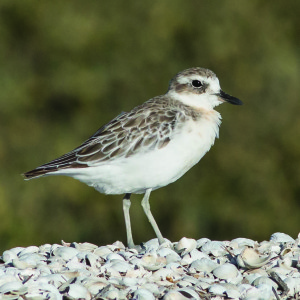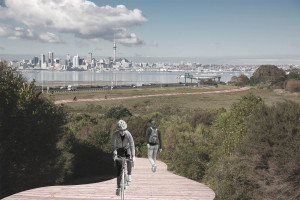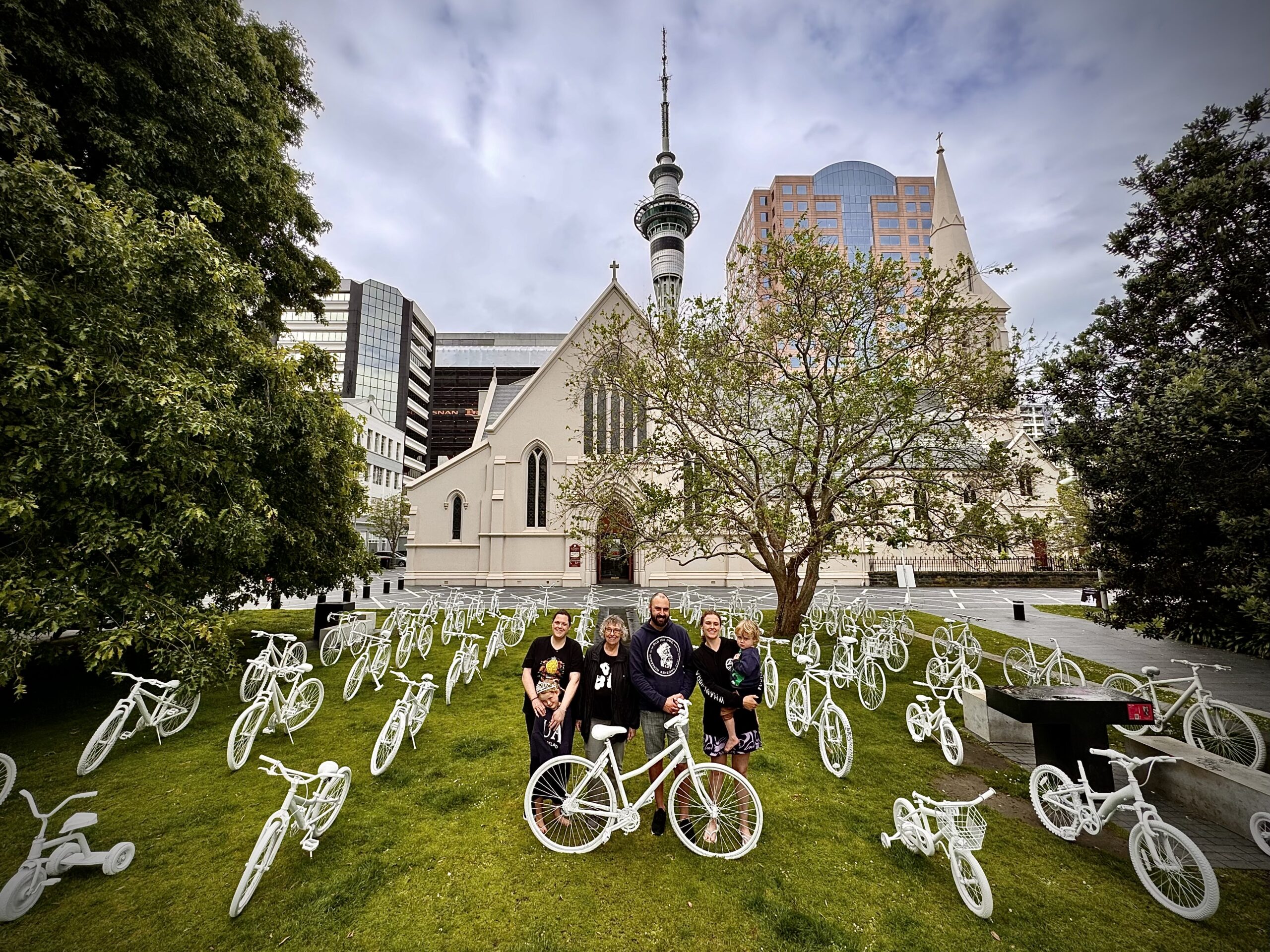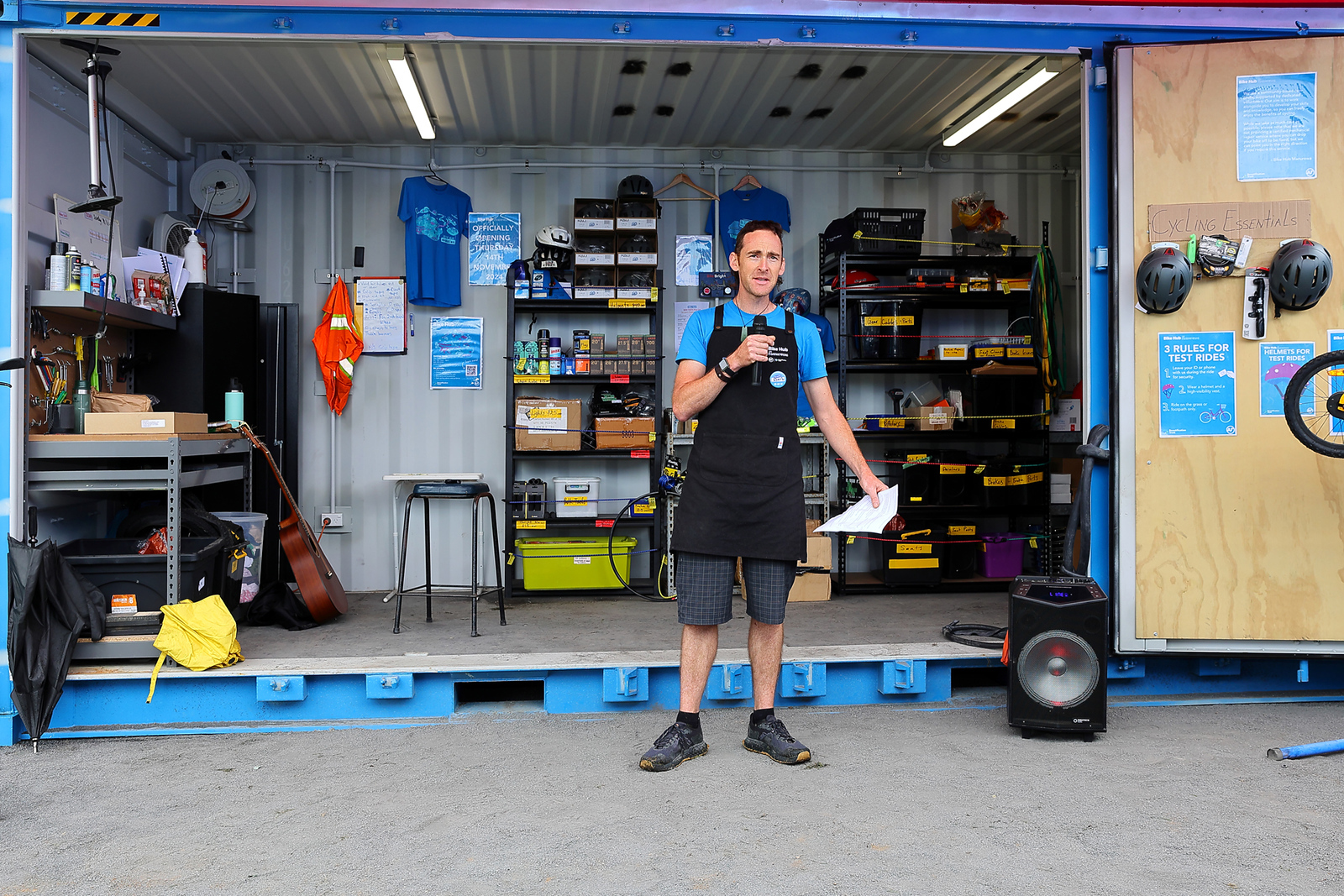Our post on SkyPath’s Northern Connectors has generated a lot of comment and it’s great to see the support not just for SkyPath itself but endorsement of the need for multiple routes catering for many different user requirements.
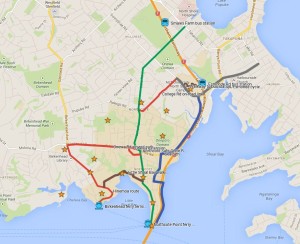
So let’s have a closer look at SeaPath – the generic name for the connector between SkyPath and southern Takapuna and the Devonport Peninsula marked in blue on the adjacent map. As with any project, we’ll set out the requirements, then look at possible design alternatives, with a commentary on Forest & Bird’s NaturePath proposal.
There are two types of cyclists who will be attracted to SeaPath. Firstly, tourists, visitors and recreational cyclists, bearing in mind there will be a number of pedestrians with similar requirements as well. They’ll be looking for:
- A protected route away from motorised traffic
- Easy gradients
- Spectacular scenery and points of interest
- The opportunity to travel slowly, stop, look, linger and learn
- Access off the path to local attractions such as Onepoto Basin and Tuff Crater
- Access to paid public car parking at AUT, and public transport at the Esmonde Rd bus station
- A safe and attractive connector through to southern Takapuna, and to Lake Rd/Green Route for a Devonport/Bayswater round trip.
Secondly, we need to consider commuter cyclists, and there will be many. Any cycling commuters originating from the Eastern Bays will use SeaPath, likely via East Coast Rd, Forrest Hill Rd, Taharoto Rd and Fred Thomas Drive. Those from the Devonport Peninsula will use Lake Rd. The Esmonde Rd shared path will become much busier, requiring improvements as pointed out in the previous post. So requirements for SeaPath here are:
- A protected route away from motorised traffic
- The ability to travel safely at high speeds (say a design speed of 30kph)
- Large radius curves
- Assured traction on a smooth surface, especially in adverse weather conditions
- Minimal hold-ups caused by lack of priority at intersections, and milling pedestrians
- A generally attractive route.
Then we need to consider our environmental and planning constraints, which in a nutshell are:
- The availability of land for the path
- Terrain which is hilly in places
- The ecological sensitivity of the Shoal Bay foreshore, particularly with regard to the endangered dotterels
- Integration with the long term plan to run a cycleway along side the Northern Motorway (not dissimilar to the North-Western cycleway).
So you can see the challenges faced by the design team. Some requirements are in alignment, some complementary, while some are conflicting. We don’t have the luxury of greenfields development, so clearly some compromises have to be made to meet all requirements as best we can within the environmental constraints. Who said cycle design was just a matter of splashing a bit of paint on a road?
So let’s work it through:
- The motorway corridor dominates the easy gradients in the vicinity, so we have to use the edges. There really is no other feasible option. That’s why NZTA is driving this design, and we (Cycle Action, AHB Pathway Trust, Forest & Bird, and any other stakeholders) are interested observers lobbing in suggestions and seeking engagement. Auckland Transport has a peripheral role where SeaPath escapes the motorway corridor to connect with the existing street and cycle networks
- The path needs to be wide to cater for high speed cyclists sharing with pedestrians. A desirable width here would be 5m, particularly if there are railings, and you could reasonably expect there to be given the drop-offs into a mangrove estuary
- The path needs to have build-outs or observation platforms at key scenic locations where recreational users, especially in groups, can stop for photos, views and informative signboards without disrupting moving traffic
- The other requirements and constraints are detailing – no less important, but they don’t drive the design like the initial bullets do
- And of course there will be some budget constraints.
As mentioned in the previous post, NZTA haven’t yet shared their design with us. We’ve heard rumours that it does propose to utilise some of the eastern side of the motorway corridor, but have no idea as to what extent, or whether it would encroach on ecologically sensitive areas.
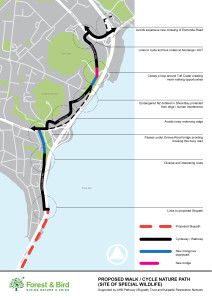
Forest and Bird are sufficiently concerned about eastern encroachment that they’ve proposed an alternative route for SeaPath called NaturePath – a nature-friendly walking and cycling route linking Northcote Point with Akoranga Drive, and incorporating a board-walk and bridge over Tuff Crater. Key aspects of the route are:
- From the Harbour Bridge to Stafford Park
- Across the mangroves on the western side of the motorway, underneath Onewa Rd to link up with the Wave Bridge near Onepoto Domain
- Either up Sylvan Ave to Heath Rd, or along the western side of the motorway to Heath Reserve
- Across the mangroves at Tuff Crater offset some distance to the west of the motorway
- Via Warehouse Way to Esmonde Rd.
We think NaturePath has a lot of merit, and it’s certainly worthy of NZTA analysis and comparison with their own nascent design. We do have some comments on NaturePath though, that may have a bearing on its feasibility:
- Care will need to be taken to ensure there is sufficient clearance under Onewa Rd, particularly with king tides and storm surges
- The linkage in the vicinity of the Onewa Rd Wave Bridge is likely to be tricky, with some tight radius turns
- The Sylvan Ave/Heath Rd/Heath Reserve section is very steep, and it would force many novice cyclists to dismount and walk their bikes. It is essential that at least the cycle path section sneak around the bluff adjacent to the Onewa Rd northbound on-ramp. There certainly wouldn’t be 5m available here, suggesting that the path be split and pedestrians take the Sylvan/Heath section before meeting up again in Heath Reserve
- There may be scope for the path to run parallel to the Esmonde Rd off-ramp rather than winding its way through some steeper gradients to get to Esmonde Rd via Warehouse Way
- The graphics accompanying the NaturePath proposal suggest a relatively narrow path with no railings.
So NaturePath doesn’t fully tick all the design boxes, but so long as the gradients are kept reasonable it could certainly be an acceptable compromise. And of course it gets a big tick from the dotterels.
Needless to say, we’d like to receive your views in the comments section, which will be visible to the NZTA design team. And again keep your comments on-point. We’re not discussing whether or not SkyPath/SeaPath should proceed at all – we’re assuming they will, and are seeking your input about the best design for the SeaPath component.
In due course NZTA will share their design with us. As soon as it’s in the public domain, rest assured we’ll let you know.

